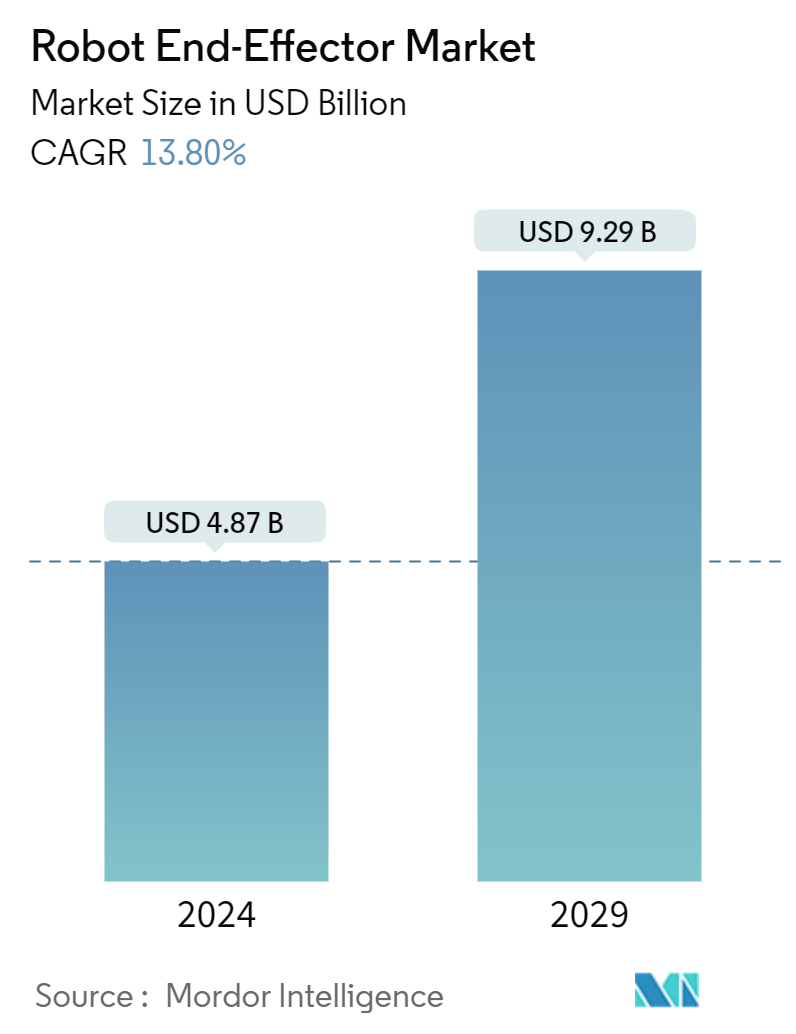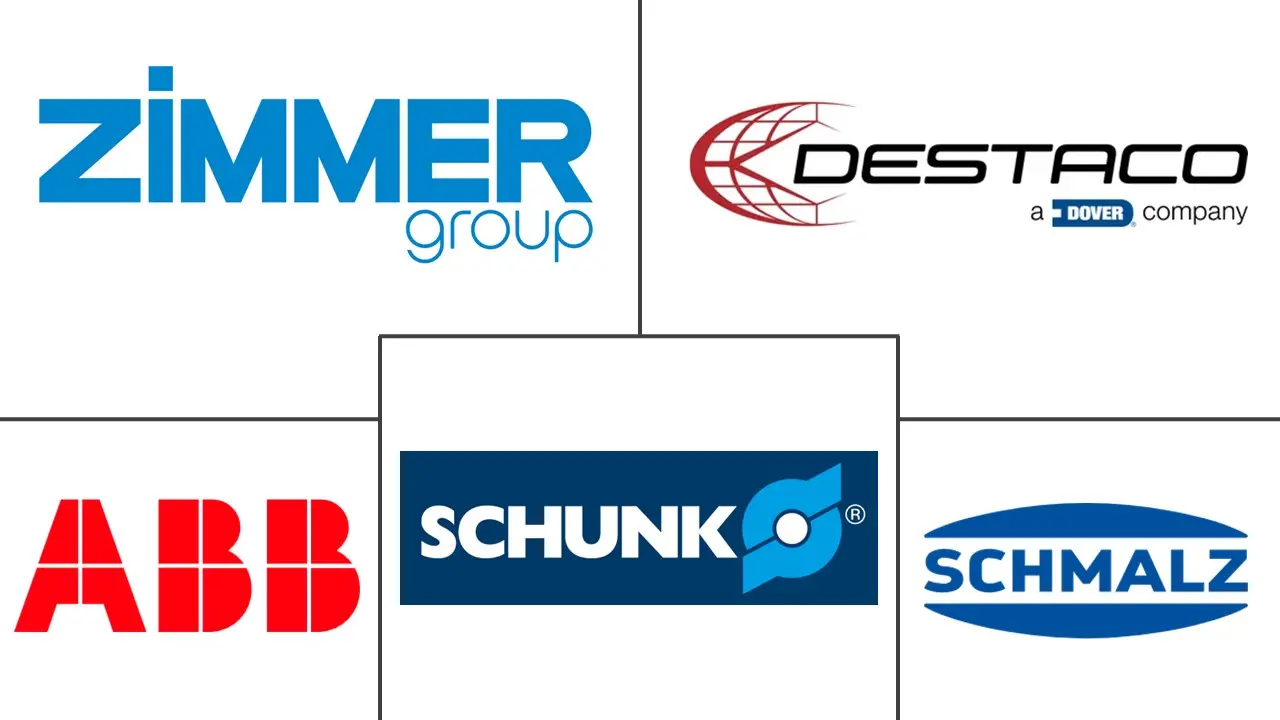Market Size of Robot End-Effector Industry

| Study Period | 2024 - 2029 |
| Market Size (2024) | USD 4.87 Billion |
| Market Size (2029) | USD 9.29 Billion |
| CAGR (2024 - 2029) | 13.80 % |
| Fastest Growing Market | Asia Pacific |
| Largest Market | Asia Pacific |
Major Players
*Disclaimer: Major Players sorted in no particular order |
Need a report that reflects how COVID-19 has impacted this market and its growth?
Robot End Effector Market Analysis
The Robot End-Effector Market size is estimated at USD 4.87 billion in 2024, and is expected to reach USD 9.29 billion by 2029, growing at a CAGR of 13.80% during the forecast period (2024-2029).
- The integration of various technologies, including artificial intelligence, automation, the Internet of Things, computing power, and robotics, facilitates the building of a new generation of smart factories. Robotics and automation have changed significantly over the past few years. In the continuously growing range of industries such as electronics, automotive, food and metalworking, and material handling, increasing investment in advanced automation creates ample opportunities for robots, thus driving end-effector demand.
- Robots work even more closely with humans, so they must respond to the users and adapt their behaviors. Over the next few years, researchers are expected to recognize basic human behaviors and adapt these robots’ actions to respond to them. Over the next few years, this will develop into much more advanced programs adapting to complex tasks’ needs. From the intelligent lift assist devices built to lift weight safely without motion power of their own to the emergence of the first cobots that came with vision-integrated systems for obstacle avoidance, the market is expected to grow even further.
- Collaborative robots are becoming increasingly affordable, less complex, and more accessible to use. This will provide multiple options to the organizations, augmenting the demand for collaborative robots in the market. Collaborative robots enable enterprises of all scales and sizes to stay competitive as these robots utilize plug-and-play technologies, advanced sensors, and automatic robot programming from CAD data. Players in the market are also expanding their operations through strategic mergers & acquisitions. Thus, the rapid adoption of collaborative robots results in the rapid growth of end-effectors.
- The main limitations of robot end-effectors have been observed in terms of their slow speed relative to human pickers, the inability of the vision system and gripper to deal with unusual items, and the reliability of being fully autonomous. The companies in the market studied have demonstrated some degree of success in picking individual items out of totes. However, the remaining half of the companies face various challenges when it comes to implementing these systems on a larger scale.
- The COVID-19 pandemic significantly impacted the robot end-effector market due to the workforce shortage, the shutdown of manufacturing facilities to restrict the spread of the virus, and nationwide lockdowns, leading to a downturn in robot manufacturing. The market experienced a surge due to the increased demand for robotics disinfection solutions, robotic logistics solutions in factories and warehouses, and robots for home delivery due to the COVID-19 pandemic.
